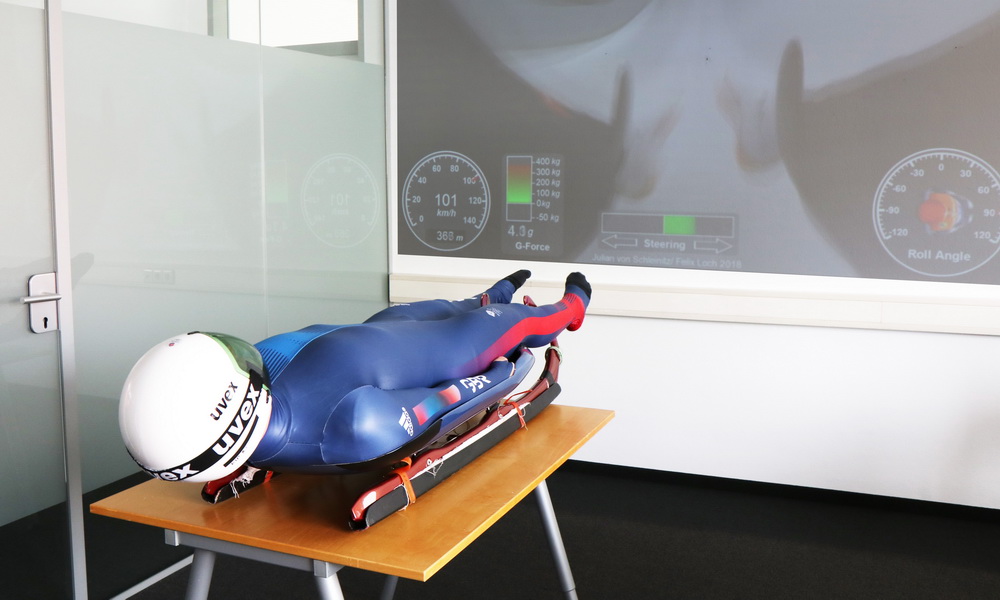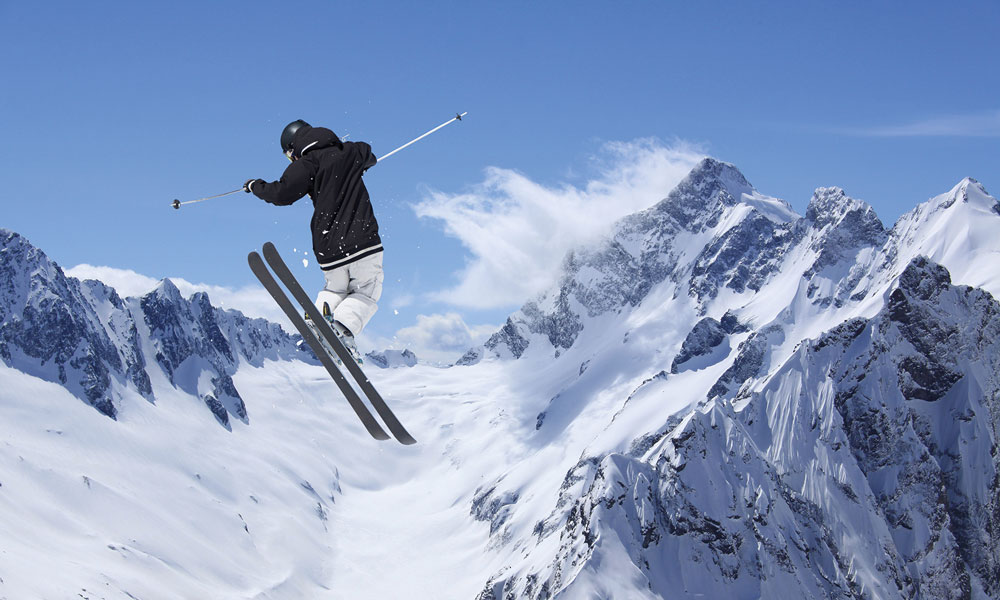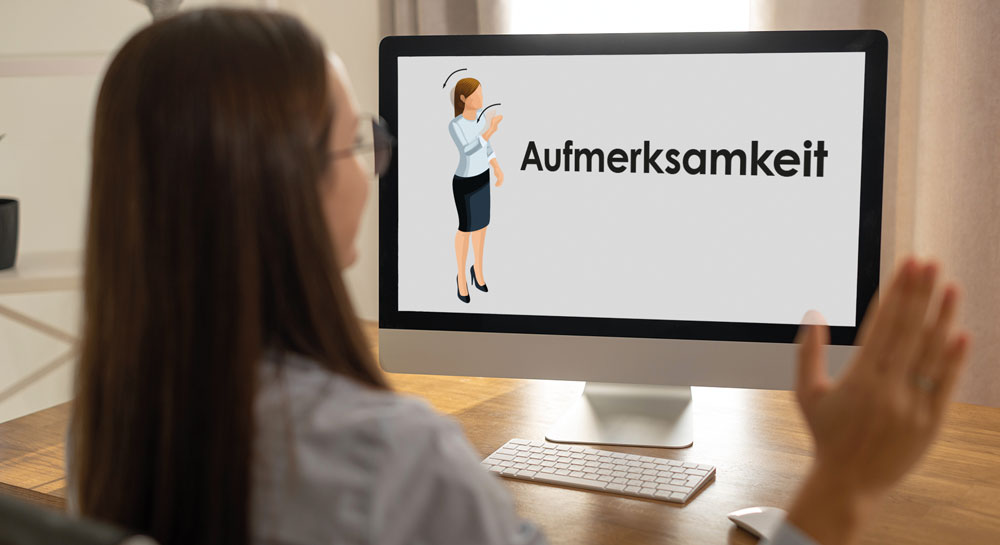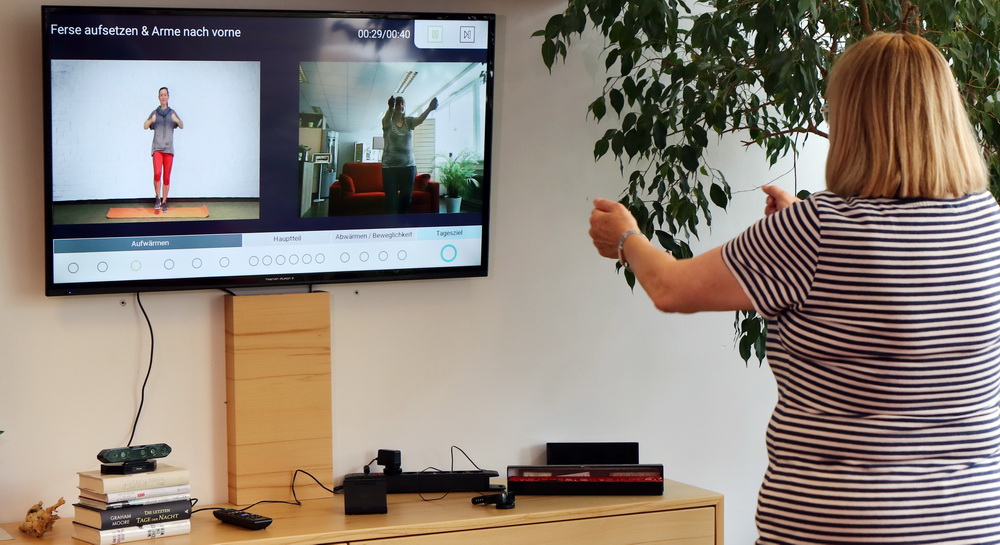
Digital in the Ice Canal: With digital feedback to the ideal sledding line
Six pressure sensors are hidden in the sled of Rupert Staudinger. Born in Bayer, he is a two-time Olympic toboggan runner, a trainer at the German Bob-and-Sledge Association, and a researcher at Salzburg Research. With the help of smart sensors, he is developing a digital feedback system that is supposed to digitize the sport of tobogganing and bring tobogganing professionals ever closer to the ideal line in the ice channel.
The race sled used by Rupert Staudinger at the 2022 Winter Olympics in Beijing is currently more like a high-tech analytical device than a sports device. Six ultra-thin pressure sensors are attached to the sled: two in the shoulder area, two on the handles, and two on the arches of the skates, the so-called “horns.” With the help of this prototype, the two-time Olympic participant is working on the digitalization of his sport.
Making barely visible movements digitally visible
Racing toboggan athletes steer the sled with the finest weight shifts of the upper body by pulling the grips and pressing the legs on the horns. “Steering is a whole-body movement with fine and well-timed movements that are usually invisible to the naked eye. With my research, I want to make these movements measurable and thus further develop the sport of tobogganing with digital help,” says Salzburg Research researcher and two-time Olympic participant Rupert Staudinger.
So far, the races are usually discussed via radio with the trainers, who are positioned at certain sections of the route, and later in the hotel through video evaluation. In addition, the intermediate times are used to analyze where time was lost.
“Good material, a fast start, low drag, and an ideal driving line are crucial for sporting success in toboggan racing. Real-time data on steering techniques can provide valuable insights for performance analysis and improvement. For example, personalized training plans tailored to individual steering patterns could be developed,” says André Sander from the German Bob-and-Sledge Association.
Detailed work on the sensor setup
The research work of Rupert Staudinger is at the forefront of bringing digitalization into bobsledding and tobogganing. There is no method of measuring steering impulses yet, and whether this works at all or not is currently being researched and tested. The application-oriented research institute Salzburg Research offers the necessary know-how in sensor technology and measurement with new technologies.
“In the beginning, it was important to find a fitting setup for the sensor system: which sensor system is suitable, how many sensors are needed, and where and how they are best installed in order to be able to obtain meaningful data on the interactions of the athletes,” says Staudinger. In an iterative process, the quality of the data is assessed, and whether the collected data reproduces the steering impulses in a way that can be used for further data analysis is researched. It’s still being tested and tweaked in the lab. In a final step, the system is to be tested in a real environment, i.e., directly in the ice tracks.
First steps towards digitalization: Free testing before investment
This research is funded by the European Digital Innovation Hub (EDIH) “Crowd in Motion.” The EDIH „Crowd in Motion“ supports companies and organizations in their digital transformation in the tourism, sports, and leisure industries with tailor-made advice and services, usually completely free of charge for small and medium-sized businesses, organizations, and public institutions.
The EDIH is an ideal tool for taking the first steps towards digitalization with the know-how of experts, the suitable infrastructure, and a scientific base. Counseling in the area of “Test before Invest” provides the Bob-and-Sledge Association with the opportunity to experiment professionally before a lot of money is invested in a sensor system that may not function properly.
More information in the press info:
Digital im Eiskanal: Mit dem digitalen Rennrodel zur Ideallinie















